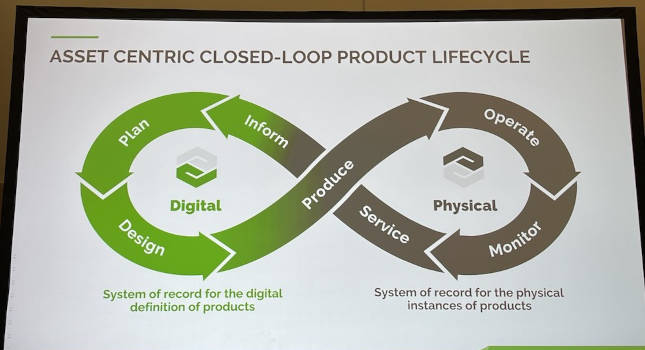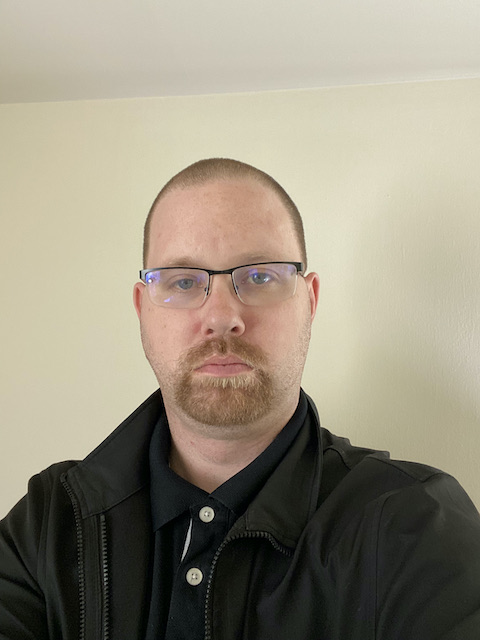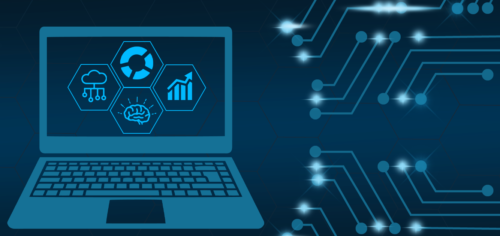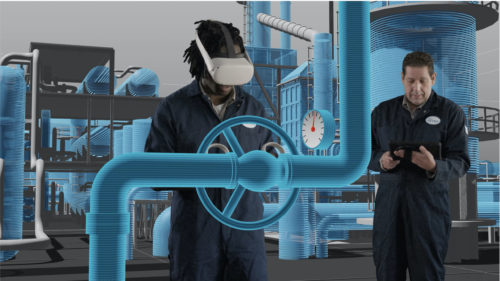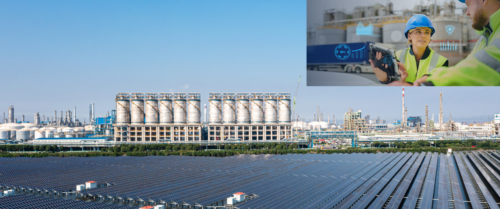How the digital thread can help people learn and improve
The digital thread ties the digital and physical processes for products, creating a constant loop for refinement and improvement. The same can be said for how we learn and improve.
Digital transformation insights
- The digital thread ties the digital and physical aspects of manufacturing production and the two are tied together thanks to the convergence of information technology (IT) and operational technology (OT).
- The lessons learned from the digital thread can be applied to the human learning process and how we can better ourselves in the process.
At PTC LiveWorx in Boston, a consistent theme was the digital thread that runs across the manufacturing landscape. The digital thread is about combining the physical and digital aspects of a product’s lifecycle and both sides feeding into one another.
PTC exemplified this with the infinity symbol image of a sideways 8, which struck me as an interesting visual. In the context of the asset centric closed-loop product lifecycle, the digital loop was described in digital aspects along with physical counterparts with the digital and physical aspects. The digital aspects included product planning and designing the product, which feed into the physical world aspect, which consisted of operation, monitoring and services, swinging as it swings back around to the digital side of informing the team of what worked, what didn’t and what needs to be done for the next product iteration of the product.
On paper, it is a very simple — and maybe simplistic — concept, but the truth is this is how so much is produced. People come up with ideas and put them into action and from seeing them function in the real world, they create an improve version learn what they can do better. Manufacturing is a world where it consistently happens, but it’s no different from a conceptual design or an idea.
The duality of manufacturing today
The idea of bringing the physical and digital worlds together through the industrial Internet of Things (IIoT) has a major role for manufacturers. Connecting all these devices on the plant floor or in the field to the internet allows companies to get a much broader view of their operations, and they can learn how to perform their roles better.
This mixture of the information technology (IT) and operational technology (OT) world is similar to integration and optimization of another way of saying the digital and physical. The two worlds have become interconnected, and LiveWorx emphasized that point consistently throughout the educational sessions and the show floor.
It’s not just limited to LiveWorx, though. Hannover Messe messages said the same. So did Automate in 2022. The last show I attended live before the COVID-19 pandemic, Automation Fair in 2019, was already talking about IT/OT convergence as a major part of manufacturing’s future. COVID-19 accelerated what might have been a more gradual transition to this new reality. Massive retirements, remote workers and increased automation to offset the workers they lost accelerated this need. Customers needed help from manufacturers andeased up on traditional specifications and technologies used.
这种二元性的数字和物理制造or IT/OT convergence or whatever companies call it have changed how people work and interact in several ways. In the end, though, it’s about learning through the production process and making things better. It is like an infinity symbol sideways 8 in that everything inevitably feeds into one another. A product doesn’t have an infinite lifecycle, but the learning process is if done correctly.
Information is the greatest commodity we have today, and the challenge is effectively using all this data being fed to us and making sense of it. Artificial intelligence (AI), machine learning (ML) and big data tools can help parse the information down to something manageable. It’s up to the worker to understand it. That’s getting harder to do, but it is critical to the future success of the manufacturing industry.
David Brousell, co-founder, VP and executive director of the Manufacturing Leadership Council, said, “If we make things more efficient and get better at using data effectively, we will be able to reinvent ourselves as manufacturers for the rest of the 21stcentury.”
He was referring more to making manufacturing an attractive job for future generations, but it’s also about making the job easier for the people working and making the technologies of tomorrow.
The digital thread goes around and around in an infinite loop when it comes to learning and bettering ourselves. While it’s easier said than done, the technology and the tools are there for companies to take a quantum leap forward in how we produce and make things. The show floors are brimming with potential and possibility at all these digital technologies, but it still comes down to people.
Chris Vavra, web content manager, CFE Media and Technology,cvavra@cfemedia.com.
Do you have experience and expertise with the topics mentioned in this content? You should consider contributing to our CFE Media editorial team and getting the recognition you and your company deserve. Clickhereto start this process.


